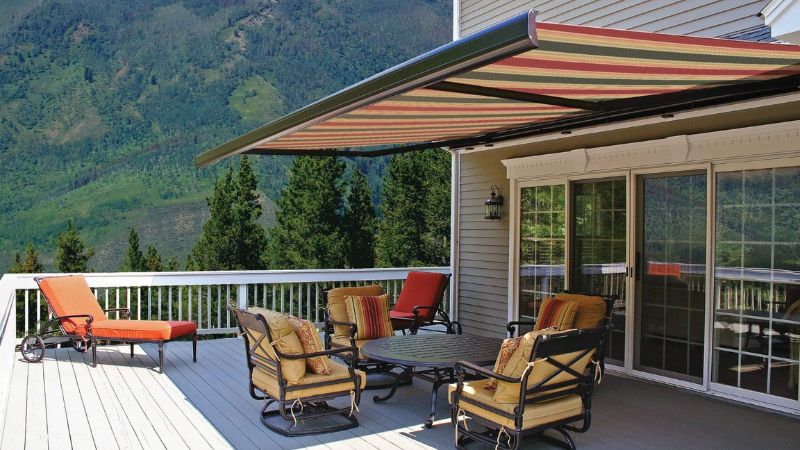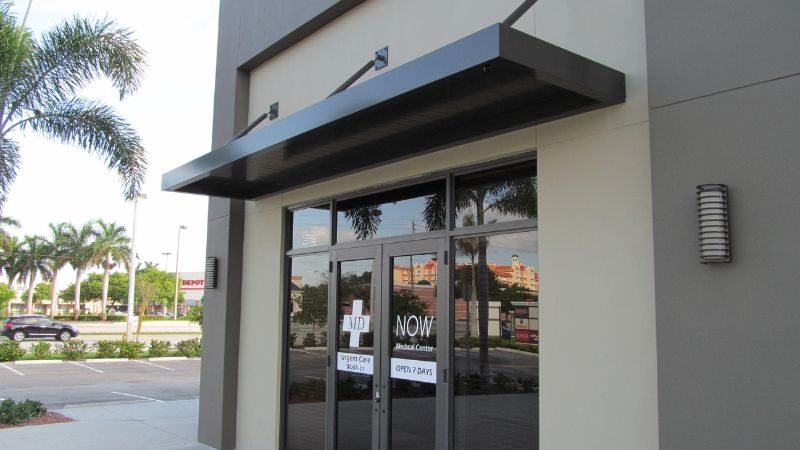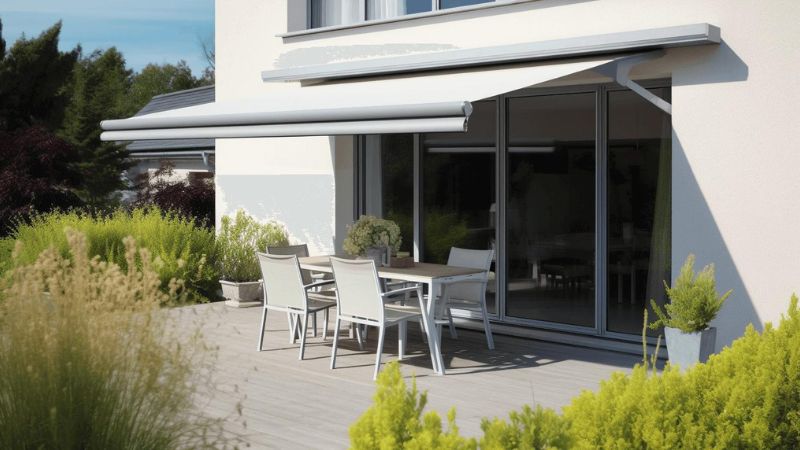Retractable awnings offer an excellent way to enhance your outdoor space while providing much-needed shade and protection. Whether you’re looking to cool down your patio or create a comfortable outdoor seating area, retractable awnings are a versatile solution.
But before you invest, there are key things you should know. From understanding the types available to learning about maintenance and installation tips, making an informed decision will ensure you get the most out of your purchase. In this article, we’ll cover 9 essential things you should know about retractable awnings to help you make the best choice for your home.
9 Things You Should Know About Retractable Awnings
1. Types of Retractable Awnings
Manual and motorized retractable awnings are the two primary varieties. A button is pressed to extend or retract a manual awning; a button is pressed to activate a motorized awning. Motorized options often come with remote controls and can even be automated with sensors to adjust based on the weather.
Choosing between manual and motorized depends on your budget and convenience preferences. Manual awnings are typically more affordable, but motorized versions offer ease of use, especially for larger awnings. Additionally, motorized awnings can integrate with smart home systems, providing an effortless outdoor experience.
Also Read:- How To Remove Mould From Canvas Awnings
2. Material Options and Durability
The fabric of a retractable awning plays a significant role in its durability and effectiveness. Most awnings are made of acrylic, polyester, or vinyl-coated fabrics. Acrylic fabrics are breathable and resistant to mildew, making them ideal for humid climates.
Polyester and vinyl options are more water-resistant, which is beneficial in areas with heavy rain. Durability is another consideration—high-quality fabrics can resist fading from UV exposure and last for many years. It’s important to choose a material that is both weather-resistant and suitable for your climate to ensure longevity and low maintenance.
3. Protection from the Elements
Retractable awnings provide protection from various weather conditions, including harsh sunlight, light rain, and even wind. They are particularly useful in blocking UV rays, reducing sun exposure by up to 95%, which can help prevent skin damage and protect outdoor furniture from fading.
In addition, retractable awnings can lower indoor temperatures, reducing energy costs by keeping your home cooler. However, it’s important to note that awnings are not designed to withstand extreme weather conditions like heavy rain, snow, or strong winds. Retracting the awning during storms can prolong its life and prevent damage.
4. Energy Efficiency Benefits
One of the lesser-known advantages of retractable awnings is their contribution to energy efficiency. By shading your windows and outdoor spaces, these awnings can reduce the heat that enters your home, especially during hot summer months.
This reduces the need for air conditioning and lowers energy bills. According to studies, retractable awnings can reduce indoor temperatures by as much as 15 degrees Fahrenheit. Over time, the savings on cooling costs can offset the initial investment in the awning. Plus, the ability to retract the awning during the winter months allows you to take advantage of natural sunlight for warmth.
5. Customization and Aesthetic Appeal
Retractable awnings come in a wide variety of colors, patterns, and designs, making them a customizable addition to your home’s exterior. You can select a style that complements your home’s architecture and outdoor décor. Some awnings even feature custom valances or trims for added visual interest.
In addition to aesthetic appeal, the size and shape of the awning can be tailored to your specific needs. Whether you’re looking for a small awning to shade a window or a larger one to cover a patio, customization options ensure the awning fits perfectly and enhances your outdoor living space.
6. Ease of Maintenance
Retractable awnings are generally low maintenance, but regular care is essential to keep them functioning properly and looking their best. Most fabric awnings can be cleaned with a mild detergent and water, removing dirt, debris, and mildew. It’s also important to inspect the hardware periodically to ensure everything is in good working order.
Rust-resistant materials are often used for the frame, but it’s still wise to check for wear and tear. Retracting the awning during storms and when not in use can also reduce exposure to the elements, extending the awning’s lifespan.
7. Installation Considerations
When installing a retractable awning, several factors need to be taken into account, including the location, size, and type of surface it will be mounted on. Awnings can be installed on walls, soffits, or roofs, depending on the structure of your home. Proper installation is crucial for ensuring that the awning operates smoothly and remains secure.
It’s recommended to hire a professional installer to avoid potential issues with stability and alignment. A properly installed awning should be level, supported by appropriate brackets, and angled to allow rainwater to run off easily without pooling on the fabric.
8. Cost and Investment Value
The cost of retractable awnings can vary significantly based on factors like size, material, and whether they are manual or motorized. On average, manual awnings are more affordable, with prices ranging from $500 to $2,500, depending on the specifications.
Motorized versions tend to be pricier, ranging from $1,000 to $5,000 or more. While the upfront cost might seem high, the long-term benefits, including energy savings, enhanced outdoor living, and increased home value, make retractable awnings a worthwhile investment. Some homeowners also recoup costs by avoiding the need for a permanent patio structure.
Also Read:- Basic Steps of RV Awning Maintenance
9. Warranty and Lifespan
Most retractable awnings come with a manufacturer’s warranty that covers the fabric, frame, and motor for a certain period. Warranties typically range from 5 to 15 years, depending on the brand and quality of the awning.
It’s essential to read the warranty terms carefully, as they often outline the conditions under which repairs or replacements are covered. Proper care and maintenance can extend the lifespan of your awning beyond the warranty period, with many high-quality awnings lasting up to 15 years or more. Knowing the details of your warranty ensures that you can address any potential issues without extra cost.
Conclusion
Retractable awnings are a fantastic addition to any home, providing both aesthetic appeal and functional benefits. By understanding these 9 important factors, you can confidently choose the right awning that meets your needs. Whether it’s energy savings, protection from the elements, or enhancing your outdoor experience, retractable awnings are a smart investment for your home.
FAQs
Are retractable awnings easy to install?
Yes, most retractable awnings come with simple installation guides, though professional installation is recommended for the best results.
How long do retractable awnings last?
With proper maintenance, retractable awnings can last between 10 to 15 years, depending on the quality and usage.



